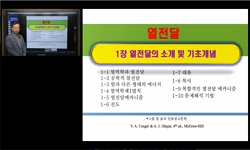1차원 등엔트로피 모델과 통합된 경계층 적분법은 초음속 노즐의 설계과정에서 내열재 표면의 열전달을 예측하는데 효과 적으로 사용되고 있지만 노즐 목과 같이 2차원 효과와 경계층과 노...
http://chineseinput.net/에서 pinyin(병음)방식으로 중국어를 변환할 수 있습니다.
변환된 중국어를 복사하여 사용하시면 됩니다.
- 中文 을 입력하시려면 zhongwen을 입력하시고 space를누르시면됩니다.
- 北京 을 입력하시려면 beijing을 입력하시고 space를 누르시면 됩니다.
https://www.riss.kr/link?id=A102868258
- 저자
- 발행기관
- 학술지명
- 권호사항
-
발행연도
2017
-
작성언어
Korean
- 주제어
-
등재정보
KCI등재
-
자료형태
학술저널
- 발행기관 URL
-
수록면
47-53(7쪽)
-
KCI 피인용횟수
2
- DOI식별코드
- 제공처
- 소장기관
-
0
상세조회 -
0
다운로드
부가정보
국문 초록 (Abstract)
1차원 등엔트로피 모델과 통합된 경계층 적분법은 초음속 노즐의 설계과정에서 내열재 표면의 열전달을 예측하는데 효과 적으로 사용되고 있지만 노즐 목과 같이 2차원 효과와 경계층과 노즐 코어유동의 상호작용이 발생하는 지점에서는 경계층 외부유동 해석의 부정확성으로 해석의 정확도가 감소한다. 따라서 본 연구에서는 경계층 적분법을 이용한 열전달 예측의 정 확도를 향상시키기 위해 CFD를 이용하여 2차원 효과와 노즐 코어유동의 상호작용이 고려된 경계층 외부유동 조건을 도출 하고 이를 경계조건으로 하는 해석기법을 개발하였다. 오일러 모델과 SST k-ω 모델을 CFD로 해석하여 경계조건으로 적용 했으며 계산방법을 검증하기 위해 선행문헌의 실험노즐에 대해 해석을 수행하였다. 계산 결과 CFD를 통해 경계층 외부유동 조건을 도출한 해석에서 노즐 열전달의 정확도가 향상되는 것을 확인하였으며 특히 노즐 목 후방과 팽창부에서의 차이가 크 게 나타났다. SST k-ω모델로 도출된 계산결과는 1차원 등엔트로피 모델과 비교 시 팽창부에서 실험결과와의 오차가 16% 감소하였다. 본 연구에서 개발된 해석기법은 향후 로켓노즐의 내열설계에 유용하게 사용될 것으로 평가된다.
다국어 초록 (Multilingual Abstract)
A boundary layer integral combined with a 1-D isentropic core flow model has been successfully used to determine heat transfer rate on the surface of a supersonic nozzle. However its accuracy is affected by the core flow condition which is used as a b...
A boundary layer integral combined with a 1-D isentropic core flow model has been successfully used to determine heat transfer rate on the surface of a supersonic nozzle. However its accuracy is affected by the core flow condition which is used as a boundary condition for the integral calculation. Because flow behavior near a nozzle throat deviates from 1-D isentropic condition due to 2-D flow turning and interaction between core flow and boundary layer, accuracy of heat transfer calculation decreases at a nozzle throat. Therefore, CFD is adopted to deduce improved core flow condition and increase accuracy of boundary layer integral at nozzle throat in this research. Euler model and SST k-ω model is solved by CFD code and used as a boundary condition for boundary layer integral. Developed code is tested in the supersonic nozzle from the previous research and improvement in accuracy is observed, especially at nozzle throat and diverging section of the nozzle. Error between experimental result and calculation result reduced by 16% when a calculation is made based on the SST k-ω model. Method developed in this research is expected to be used in thermal design of the rocket nozzle.
참고문헌 (Reference)
1 Nichols, R. H., "Wall Function Boundary Conditions Including Heat Transfer and Compressibility" 42 (42): 1107-1114, 2004
2 Bartz, D.R., "Turbulent Boundary-Layer Heat Transfer from Rapidly Accelerating Flow of Rocket Combustion Gases and of Heated Air" Academic Press 2 : 1-108, 1965
3 Kwong, K., "Momentum/Energy Integral Technique(MEIT) User's Manual" Acurex Corp/Aerotherm Mountain View Caaerospace Systems Div 1978
4 Anderson, J.D.Jr., "Ludwig Prandtl’s Boundary Layer" 58 (58): 42-48, 2005
5 Dittus, F. W., "Heat Transfer in Turbulent Pipe Flow of Gases with Viable Properties" 5 : 109-116, 1930
6 Back, L., "Convective Heat Transfer in a Convergent-Divergent Nozzle" 7 (7): 549-568, 1964
7 Yoder, D., "B4wind user’s Guide" NASA
1 Nichols, R. H., "Wall Function Boundary Conditions Including Heat Transfer and Compressibility" 42 (42): 1107-1114, 2004
2 Bartz, D.R., "Turbulent Boundary-Layer Heat Transfer from Rapidly Accelerating Flow of Rocket Combustion Gases and of Heated Air" Academic Press 2 : 1-108, 1965
3 Kwong, K., "Momentum/Energy Integral Technique(MEIT) User's Manual" Acurex Corp/Aerotherm Mountain View Caaerospace Systems Div 1978
4 Anderson, J.D.Jr., "Ludwig Prandtl’s Boundary Layer" 58 (58): 42-48, 2005
5 Dittus, F. W., "Heat Transfer in Turbulent Pipe Flow of Gases with Viable Properties" 5 : 109-116, 1930
6 Back, L., "Convective Heat Transfer in a Convergent-Divergent Nozzle" 7 (7): 549-568, 1964
7 Yoder, D., "B4wind user’s Guide" NASA
동일학술지(권/호) 다른 논문
-
- 한국전산구조공학회
- 강영진
- 2017
- KCI등재
-
BIM 소프트웨어를 활용한 토목 시설물 IFC 확장요소기반의 정보모델링 방안
- 한국전산구조공학회
- 이상호
- 2017
- KCI등재
-
철도인프라 3차원 객체라이브러리 구축을 위한 표준도/분류체계 분석
- 한국전산구조공학회
- 박형진
- 2017
- KCI등재
-
- 한국전산구조공학회
- 박주영
- 2017
- KCI등재
분석정보
인용정보 인용지수 설명보기
학술지 이력
| 연월일 | 이력구분 | 이력상세 | 등재구분 |
|---|---|---|---|
| 2028 | 평가예정 | 재인증평가 신청대상 (재인증) | |
| 2022-01-01 | 평가 | 등재학술지 유지 (재인증) |  |
| 2019-01-01 | 평가 | 등재학술지 유지 (계속평가) |  |
| 2016-01-01 | 평가 | 등재학술지 선정 (계속평가) |  |
| 2015-12-01 | 평가 | 등재후보로 하락 (기타) |  |
| 2011-01-01 | 평가 | 등재학술지 유지 (등재유지) |  |
| 2009-01-01 | 평가 | 등재학술지 유지 (등재유지) |  |
| 2007-01-01 | 평가 | 등재학술지 유지 (등재유지) |  |
| 2005-05-29 | 학술지명변경 | 외국어명 : 미등록 -> Journal of the Computational Structural Engineering Institute of Korea |  |
| 2005-01-01 | 평가 | 등재학술지 유지 (등재유지) |  |
| 2002-01-01 | 평가 | 등재학술지 선정 (등재후보2차) |  |
| 1999-07-01 | 평가 | 등재후보학술지 선정 (신규평가) |  |
학술지 인용정보
| 기준연도 | WOS-KCI 통합IF(2년) | KCIF(2년) | KCIF(3년) |
|---|---|---|---|
| 2016 | 0.27 | 0.27 | 0.23 |
| KCIF(4년) | KCIF(5년) | 중심성지수(3년) | 즉시성지수 |
| 0.22 | 0.2 | 0.443 | 0.03 |





 ScienceON
ScienceON 코리아스칼라
코리아스칼라







